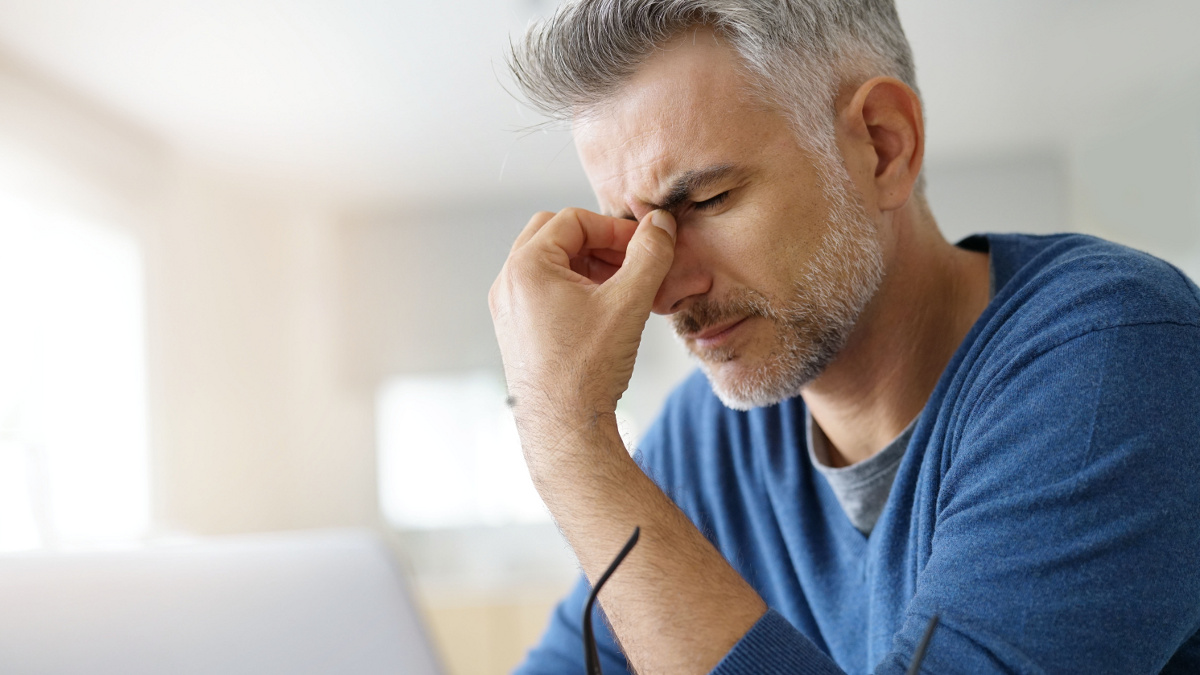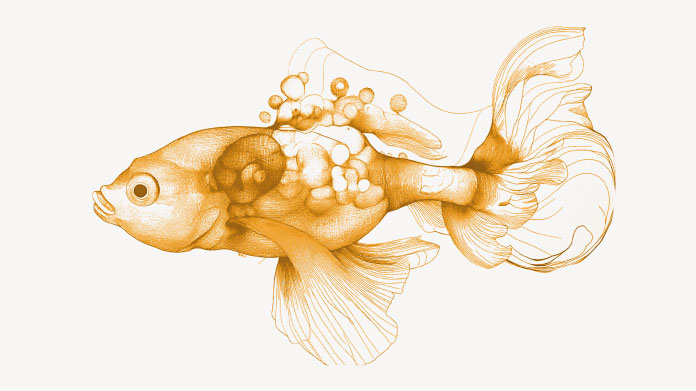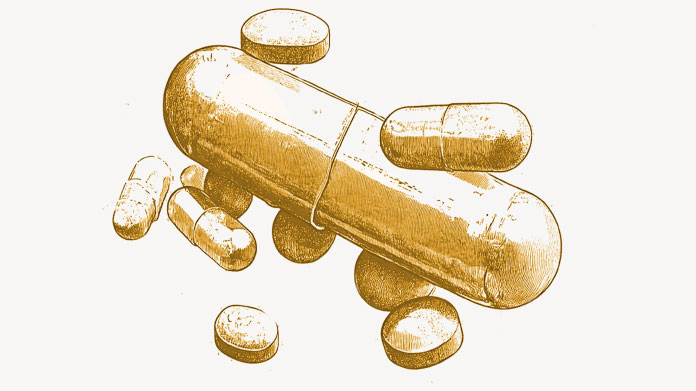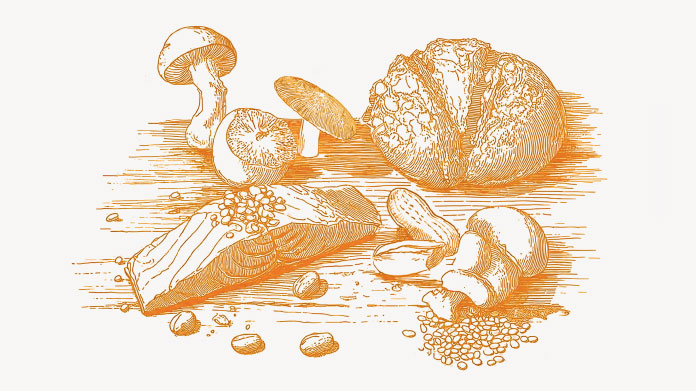Painkillers: 6 recent discoveries you should know about before taking analgesics
Perhaps you frequently suffer from aches and pains, and like everyone, reach for the analgesics every now and then … If that’s the case, you will definitely be interested in these six new discoveries, presented below as a series of statements. Can you guess whether they’re true or false?

Automatically taking an analgesic drug the day after a heavy night’s drinking is dangerous.
It’s true.
When you drink a substantial amount of alcohol, your liver has to first convert it into acetaldehyde and then into acetate, a totally harmless compound which is released into the bloodstream.
The problem is that acetaldehyde, the intermediate compound, is a highly toxic metabolite which alters the properties of certain proteins and promotes cell death. It therefore needs to be converted into acetate as quickly as possible in order to prevent it causing excessive damage in the body. An enzyme called ALDH ensures this crucial conversion takes place. It also brings into play a number of endogenous antioxidants such as glutathione.
After a heavy drinking session, availability of ALDH and reserves of glutathione are thus seriously compromised, and yet they both play a key role in detoxifying paracetamol! It is converted in the body into a compound called NAPQI, highly toxic for the liver, which is usually eliminated by ALDH in conjunction with glutathione (1).
In other words, when you drink too much alcohol, you lower the chances of the paracetamol in your system being properly detoxified (2-3), even to the point where whole parts of your liver may be destroyed: this is hepatic lysis.
Paracetamol damages the body’s antioxidant system.
Surprising though it may seem, it’s actually true.
We tend to take a couple of paracetamol to make us feel better when we’re feeling a bit off-colour. But automatically reaching for a drug we assume will improve our condition is actually the wrong course of action since it damages the efficacy of the body’s antioxidant enzyme system (4).
Although paracetamol can itself be a temporary antioxidant, when it is metabolised by the body it triggers a fall in levels of glutathione, glutathione peroxidase (GPx), superoxide dismutase and in antioxidant status as a whole (5). Yet these enzymes are among the most effective antioxidants for fighting the free radicals involved in ageing and diseases …
Painkillers affect our ability to process information.
It’s probably true.
In fact, we don’t yet fully understand paracetamol’s mechanism of action. Among the several theories suggested is the idea that it optimises certain neurons which exert an inhibitory effect on nociceptive (pain) pathways (6).
So even though paracetamol has been around for a long time, we still know very little about its effect on the central nervous system.
In one study (7), volunteers were asked to take part in a game which required them to take decisions at appropriate moments. Researchers discovered that individuals who had previously taken paracetamol made more errors than those who hadn’t taken the drug. This confirmed the authors’ theories and reinforced other findings that had suggested use of these drugs modifies our emotions and thought processes.
Analgesics are less effective when we’re tired.
Again, this appears to be true.
A recent study (8) suggests that the most commonly-used painkillers are significantly less effective when we’ve had had insufficient sleep. Indeed, there may be a strong relationship between sleep deprivation and exacerbation of pain: it’s possible to predict the onset and intensity of pain in healthy individuals simply by taking into account the quality and length of their sleep the preceding night (9-12).
In other words, the more tired you are, the more likely you are to feel pain and the less effective painkillers will be.
The side-effects of painkillers are not serious as long as they’re taken at normal doses.
This is completely false.
There’s a widespread belief that painkillers only cause minor side-effects – their consequences for the gastro-intestinal system are particularly well-known by the public.
In reality, however, their effects can often be serious, even at therapeutic doses. This is particularly so among the elderly, those with impaired liver function (as a result of regular alcohol consumption or poor diet), individuals taking other medication and those at risk of cardiovascular disease.
Statistics from the United States are truly alarming: 1.9 million Americans are dependent on painkilling drugs, and 19,000 of them die each year as a result of their dependency.
The French equivalent of Which? magazine, the consumer association 60 millions de consommateurs, recently published a report recommending paracetamol over ibuprofen (which has known effects on fertility and cardiovascular health) and aspirin (which poses definite risks to the liver and kidneys). A recent study even suggested that taking ibuprofen increased the risk of death from stroke by 77% compared with a placebo.
The problem is that paracetamol is not very effective for inflammatory pain, as in the case of arthritis … And it too poses an increasing risk of liver problems: a panel of American health professionals recently recommended that the maximum dose in a tablet should be reduced from 1g to 650mg (13).
There are no natural alternatives for pain relief.
Fortunately, you know this to be false.
In fact, this approach is becoming increasingly popular and recommended by doctors, even if there is still a long way to go. It is based on a simple principle: that the body is itself perfectly capable of modulating pain with the aid of compounds it either produces or ingests from the diet.
Natural solutions therefore centre on helping the body to improve its availability of endogenous painkillers through self-production and intake from the diet. And since these are structural compounds or ones familiar to the body, they have the considerable advantage of causing no side-effects.
a) Endorphins
Endorphins are small proteins which reduce the transmission of pain signals to the brain, producing lasting pain relief. They work by binding to opioid receptors found on the surface of brain cells involved in pain messages.
There are a number of ways in which endorphin production can be stimulated:
- Massage helps produce encephalin, a specific type of endorphin.
- Acupuncture triggers the release of endorphins. It seems that the tiny micro trauma produced by the insertion of fine needles by the therapist may be responsible for this beneficial effect.
- Exercise increases blood plasma endorphin levels. It also activates sensitive fibres which increase the activation threshold of pain fibres.
b) Endogenous anti-inflammatory compounds like PEA
Inflammation is a basic cellular response which enables the body to initiate processes of repair and defence against aggressors. When it persists, it results in the onset of chronic pain and may be responsible for a number of neurodegenerative diseases.
In order to protect itself from chronic inflammation, the body produces a fatty acid called PEA (palmitoylethanolamide). This small, simple molecule is produced on demand in cell membranes. It’s found in every cell in the body though it is more highly concentrated in brain tissue and areas which are chronically painful (13).
PEA exerts its effects on cells involved in the generation and transmission of pain and modulates the activation of two types of cell involved in neuro-inflammation: microglia and mastocytes (14-15). These properties make it particularly beneficial for relieving neuropathic pain as well as neuro-inflammation (16) which plays a key role in the development of chronic pain (17). Rather than taking complex drugs of which the mechanisms of action are not yet fully established, researchers have thus demonstrated the benefits of PEA supplementation as a natural alternative to relieving chronic inflammatory and neuropathic pain (18-19). Like omega-3, vitamins and melatonin, PEA is not a drug but a molecule found naturally in the body.
And finally, there is a third natural solution to pain relief.
When pain becomes chronic, it also becomes complex: nociceptor afferents gradually establish direct links with the limbic system and frontal cortex, two areas of the brain associated with memory and emotions. As a result, pain can persist even when the initial stimuli have completely disappeared (20). This type of pain does not normally respond to medication. In contrast, mental and behavioural strategies designed to manage pain and stress can be highly effective (21) (22)! This is true of mindfulness meditation, yoga and all the Eastern practices that promote a calm outlook on life (Qi Gong, Tai-chi …), cognitive behavioural therapy, sophrology, creative approaches such as visualisation, and relaxing, non-competitive pursuits (painting, gardening) …
References
- PARK BK. Induction of human drug-metabolizing enzymes. Br J Clin Pharmacol 1996, 41 : 477-491
- Lee Y.P., Liao J.T., Cheng Y.W., Wu T.L., Lee S.L., Liu J.K., Yin S.J. Alcohol. 2013;47:559–565
- Landin J.S., Cohen S.D., Khairallah E.A. Toxicol. Appl. Pharmacol. 1996;141:299–307.
- Olayeye M.T., Kolawole A.O., Ajele J.O. Iran. J. Pharmacol. Ther. 2006;6:63–66.
- O'Brien PJ, Slaughter MR, Swain A, Birmingham JM, Greenhill RW, Elcock F, Bugelski PJ. Repeated acetaminophen dosing in rats: adaptation of hepatic antioxidant system. Hum Exp Toxicol. 2000 May;19(5):277-83.
- Tjolsen A, Lund A, Hole K. Antinociceptive effect of paracetamol in rats is partly dependent on spinal serotonergic systems. Eur J Pharmacol 1991 Feb 7;193(2):193-201.
- Ratner et al. Can Over-the-Counter Pain Medications Influence Our Thoughts and Emotions? Policy Insights from the Behavioral and Brain Sciences, 2018
- Chloe A, Latremoliere A et al. Decreased alertness due to sleep loss increases pain sensitivity in mice, Nature Medicine volume 23, pages 768–774 (2017) doi:10.1038/nm.4329
- Edwards, R.R., Almeida, D.M., Klick, B., Haythornthwaite, J.A. & Smith, M.T. Duration of sleep contributes to next-day pain report in the general population. Pain 137, 202–207 (2008).
- Campbell, C.M. et al. Self-reported sleep duration associated with distraction analgesia, hyperemia, and secondary hyperalgesia in the heat–capsaicin nociceptive model. Eur. J. Pain 15, 561–567 (2011).
- Haack, M. et al. Pain sensitivity and modulation in primary insomnia. Eur. J. Pain 16, 522–533 (2012).
- Smith, M.T., Edwards, R.R., Stonerock, G.L. & McCann, U.D.Individual variation in rapid eye movement sleep is associated with pain perception in healthy women: preliminary data. Sleep28, 809–812 (2005).
- The Acetaminophen Hepatotoxicity Working Group. Recommendations for FDA Interventions to Decrease the Occurrence of Acetaminophen Hepatotoxicity. 2008 Available at:http://www.fda.gov/downloads/AdvisoryCommittees/CommitteesMeetingMaterials/Drugs/DrugSafetyandRiskManagementAdvisoryCommittee/ucm161518.pdf.
- Bachur NR, Masek K, Melmon KL, Udenfriend S. Fatty acid amides of ethanolamine in mammalian tissues. J Biol Chem. 1965;240:1019–1024.
- Skaper SD, Facci L, Fusco M, Della Valle MF, Zusso M, Costa B, et al. Palmitoylethanolamide, a naturally occurring disease-modifying agent in neuropathic pain. Inflammopharmacology. 2014;22:79–94. doi: 10.1007/s10787-013-0191-7.
- Skaper SD, Facci L. Mast cell-glia axis in neuroinflammation and therapeutic potential of the anandamide congener palmitoylethanolamide. Philos Trans R Soc Lond Ser B Biol Sci. 2012;367:3312–3325. doi: 10.1098/rstb.2011.0391.
- Skaper S, Facci L. et al. N-Palmitoylethanolamine and Neuroinflammation: a Novel Therapeutic Strategy of Resolution, DOI 10.1007/s12035-015-9253-8
- Myers RR, Campana WM, Shubayev VI (2006) The role of neuroinflammation in neuropathic pain: mechanisms and therapeutic targets. Drug Discov Today 11:8–20. doi:10.1016/S1359-6446(05) 03637-8
- Skaper SD, Facci, Giusti P (2014) Mast cells, glia and neuroinflammation: partners in crime? Immunology 141:314–327. doi:10.1111/ imm.12170
- Keppel, Kopsky. Palmitoylethanolamide, a neutraceutical, in nerve compression syndromes: efficacy and safety in sciatic pain and carpal tunnel syndrome. Journal of Pain Research [23 Oct 2015, 8:729-734]
- C Cedraschi V Piguet C Luthy Aspects psychologiques de la douleur chronique. Revue du Rhumatisme2009 (76)
- A. Margot-Duclot, Emotion and chronic pain, Douleur analg. (2013) 26:30-37, DOI 10.1007/s11724-012-0321-9
8 Hours
Quality products
Quality products , efficient and effective customer service. You can’t ask more
CLaudia
6 Days
Good quality product and customer service.
So far, I'm liking this product, and the customer service was very good.
ELZL
13 Days
The products I use are excel·lent
The products I use are excel·lent
ROSAS Josep Maria
21 Days
Delivery is prompt and I never saw a…
Delivery is prompt and I never saw a quality problem with the manufacturing. It is not possible to assess efficacy on a personal basis, since too many factors come into play. Efficacy can only be assessed statistically with a sufficient number of cases.
Roger De Backer
22 Days
I collaborates with the Supersmart…
I collaborates with the Supersmart more than 10 years. Every thing is going good. Quality of the things is good. Delivery comes in time. Five stars definitely !!!
Oleksiy
22 Days
All good
Simple, frictionless site, easy ordering, good delivery updates and execution.
Chris Robbins
24 Days
I feel better
I feel better
Peter Ammann
24 Days
Prompt delivery
Prompt delivery
JAKUB Radisch
25 Days
My new go-to for top quality supplements!
I am buying more and more of my supplements from this superb, high quality company. Cannot recommend it enough. Plus, excellent customer service with a quick, helpful team and speedy deliveries. Highly recommend Supersmart!
Cecilie H.
29 Days
SUPERSMART WHAT ELSE👍
SUPERSMART WHAT ELSE👍
DIEDERLE Christophe
32 Days
Excellent quality products with…
Excellent quality products with innovative formulas, as someone who has been suffering with acid reflux, these supplements have been lifesavers.
Oriana Moniz
32 Days
high quality supplement!
high quality supplement!
GALANT
33 Days
Good service prompt delivery
Good service prompt delivery
Mrs Marcella Reeves
38 Days
I like your clear explanation
I like your clear explanation. And how to make a choice of products for a specific health problem
Ingrid
44 Days
Great product and it arrives quickly.
Great product and it arrives quickly.
SOMMARIVA Gianni



